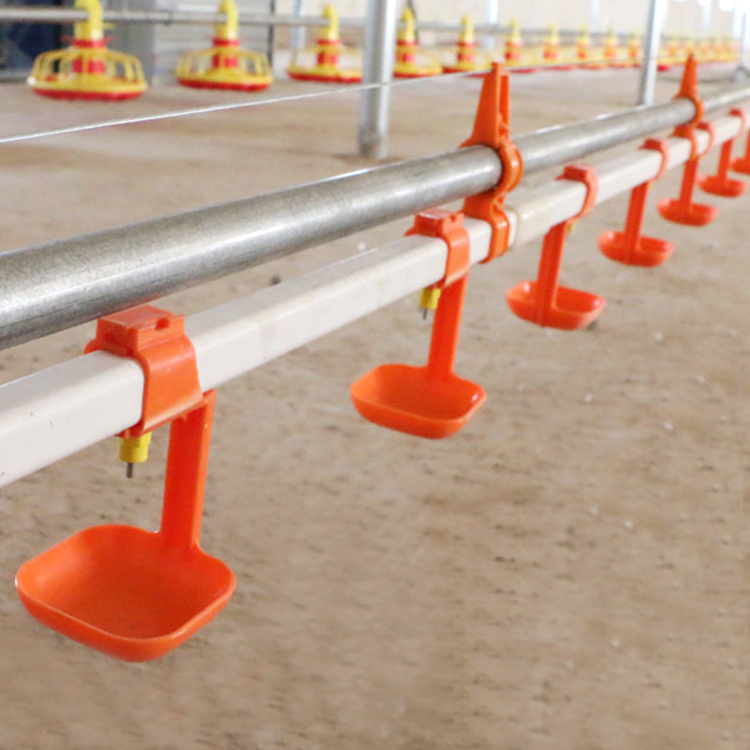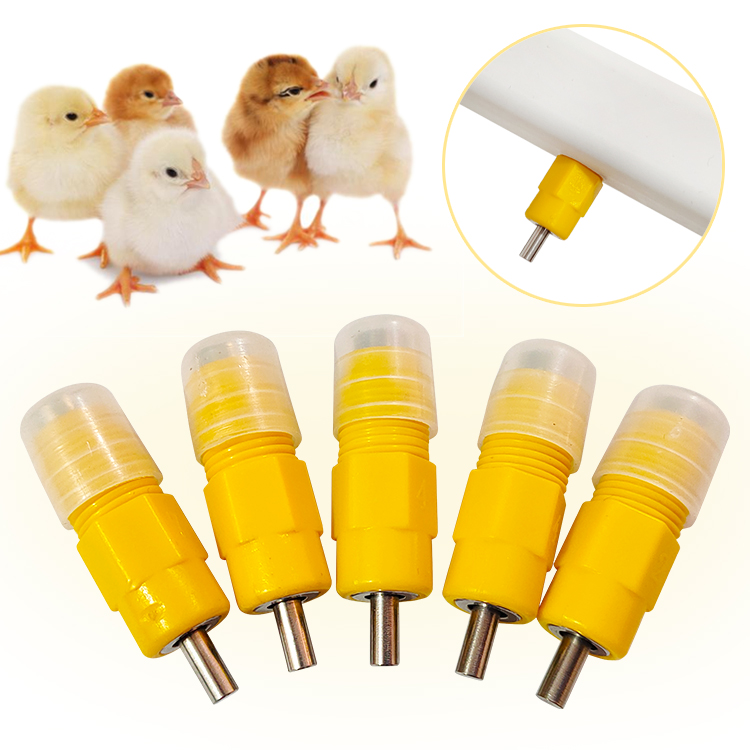News
Breeding poultry should not be difficult for us, but for those who want to be professionally farmed, they may not know much about the new line. Today, the Poultry Feeder Pan Tray Supplier will come to talk to you about the places where chick farming should pay attention.
1. Preparation before brooding
(1) Brooding mode Farmers build brooding rooms according to the planned number. The brooding room requires windows to allow air circulation and lighting to be sufficient, and it is possible to build brick and wood structures or sheds.
The three-layer three-layer net bed for brooding is suitable. The number of net beds is determined by the number of farmed chickens, calculated from 30-50 per square. The first layer of the net bed is 40 cm higher than the ground and the net bed is 30 cm high. The distance between the upper and lower layers is 20 cm. The top of the first and second layer net beds should be placed on the dung board. The skeleton of the net bed should be fixed with wooden strips or bamboo or special brooding cages. The surrounding and bottom parts are fixed with plastic nets. Poultry Feeder Pan Tray and drinking fountains are necessary. The three-dimensional net bed brooding greenhouse has the characteristics of space saving and large brooding capacity, and is suitable for professional scale farming.
Plane brooding is placed on the ground with a 1 inch long grass knot as a litter, with a thickness of about 2 cm. 3 to 5 days additional padding, keeping the grass dry until the chicks are warmed, and the grass is completely cleaned when stocked. Farmers.
Automatic Nipple Drinker For Poultry
(2) Preparation of brooding supplies Full-price chicks are fed with feed, drinking fountains, feed buckets, wet and dry thermometers, sprayers, insulation equipment, and commonly used drugs.
(3) Comprehensive disinfection The conventional spray disinfection of the chicken farm site can be carried out. Afterwards, the fumigation method is used. The specific method is to close the door and window of the chicken house before disinfection, and block all gaps.
2. Basic requirements for brooding
(1) The temperature of the chicks that have just emerged from the brooding temperature is 2 degrees to 3 degrees lower than that of the adult chickens. Therefore, the heat preservation work is very important. It is necessary to observe the temperature change at any time. Put a thermometer in the four corners and the center position of the brooding room to understand the indoors. Whether the temperature is balanced.
(2) Drinking water at the right time and eating chicks into the brooding room should drink water immediately. One to three days of age can drink two ten thousandths of potassium permanganate water. For long-distance transportation, chicks should be added with glucose and electrolysis in drinking water. The food is taken 2-3 hours after drinking. Automatic Nipple Drinker For Poultry can be used to ensure the moisture of the chicks.
(3) Feeding density The density of feeding requires 50 chickens per square meter for 1-2 weeks old, 30 chickens per square meter for 3-4 weeks old chicks, and 15-20 chickens per square meter for 5-6 weeks old chicks; The number of breeding is preferably from 70 to 100. The number of drinking fountains (one for every 50 chicks) and the feed bucket (one for every 50 chicks) should be sufficient and placed in a suitable position.
(4) The first week of the light brooding room uses 24 hours of continuous illumination, with strong light to prevent all kinds of evil, every 40 square meters of 40 watt bulbs are about 2 meters high, and the second week is gradually reduced to 19 hours. Change the 25 watt lamp and use natural light from the third week.
(5) Air and sanitation conditions The brooding room should maintain good ventilation, and the quality of hygiene is an important factor affecting the health and production performance of the flock. It is required to brush the drinking water utensils every day, clean the feeding utensils regularly, clean the sanitation, and disinfect. Regularly ventilate and regularly clean the ground chicken manure.
It is difficult for chicks to be kept and managed. Therefore, farmers need to be more patient and have more detailed management work to raise chicks, improve survival rate and create higher breeding benefits.

Pulished on Dec. 30, 2025

Pulished on Dec. 04, 2025